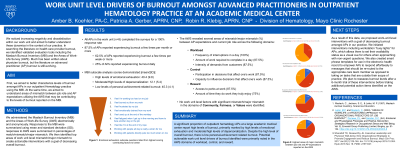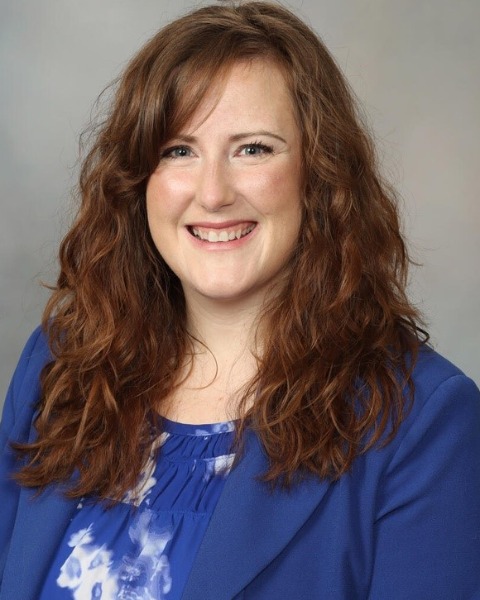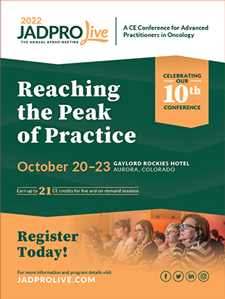Back

Clinical Posters
JL1036C: Work Unit-Level Drivers of Burnout Among Advanced Practitioners in Outpatient Hematology Practice at an Academic Medical Center
Saturday, October 22, 2022
10:00 AM – 11:00 AM ET


Amber Koehler, MPAS, PA-C
Physician Assistant, Assistant Professor of Medicine
Mayo Clinic
Rochester, Minnesota, United States
Poster Presenter(s)
AIM
We aimed to characterize and identify actionable work unit level contributors of burnout amongst outpatient advanced practitioners (APs) in our outpatient hematology practice.
METHODS
We administered the Maslach Burnout Inventory (MBI) and the Areas of Work-life Survey (AWS) electronically and anonymously. Responses to the MBI were summarized using mean and standard deviation (SD); responses to AWS were summarized in percentages of match/mismatch/major mismatch. We then identified top areas of work unit level mismatch/major mismatch to create actionable interventions with a goal of decreasing burnout.
RESULTS
All 8 APs in the work unit completed both MBI and AWS with 100% response rate. The MBI demonstrated 87.5% of APs experienced burnout a few times per month or more, with 62.5% reporting burnout a few times per week or more and 25% felt burnout daily. Subscale analysis demonstrated high levels of emotional exhaustion, with a mean (SD) of 40.4 (9.8), moderate/high levels of depersonalization with a mean (SD) of 12.1 (5.4), and low levels of personal achievement-related burnout (mean (SD) = 45.3 (4.1)). Responses to the AWS identified several areas of mismatch/major mismatch between AP expectations and current job role across domains of workload, control, and reward. In the workload domain, 100% reported a mismatch/major mismatch regarding number of interruptions in a day and 87.5% reported a mismatch/major mismatch regarding both the amount of work required to complete in a day and the intensity of demands from customers. In the control domain, 87.5% reported a mismatch/major mismatch regarding participation in decisions that affect one’s work and capacity to influence decisions that affect one’s work. In the reward domain, 87.5% of APs reported a mismatch/major mismatch regarding access to perks at work and 75% reported a mismatch/major mismatch regarding the amount of time they do work they truly enjoy. No work unit level factors with significant mismatch/major mismatch in the domains of community, fairness, or values were identified.
SUMMARY
A significant proportion of outpatient hematology APs at a large academic medical center report high levels of burnout, primarily marked by high levels of emotional exhaustion and moderate/high levels of depersonalization. Despite the high level of overall burnout, there is low personal-achievement related burnout. Potential actionable work unit level drivers of burnout identified were primarily noted in the AWS domains of workload, control, and reward.
PROPOSALS
As a result of this data, we proposed work-unit level interventions with a goal of decreasing burnout amongst APs in our practice. We initiated interventions including workstation “busy lights” for APs, which allows them to set their availability status as a visual cue for others when approaching with non-urgent questions. We also created smart phrase templates for use in the electronic health record to empower APs to respond effortlessly to messages that should be re-routed to the appropriate care team member as opposed to taking on tasks that are outside their scope of practice. We plan to reassess burnout levels after a 6-month trial of these interventions before trialing additional potential action items identified on the AWS.
We aimed to characterize and identify actionable work unit level contributors of burnout amongst outpatient advanced practitioners (APs) in our outpatient hematology practice.
METHODS
We administered the Maslach Burnout Inventory (MBI) and the Areas of Work-life Survey (AWS) electronically and anonymously. Responses to the MBI were summarized using mean and standard deviation (SD); responses to AWS were summarized in percentages of match/mismatch/major mismatch. We then identified top areas of work unit level mismatch/major mismatch to create actionable interventions with a goal of decreasing burnout.
RESULTS
All 8 APs in the work unit completed both MBI and AWS with 100% response rate. The MBI demonstrated 87.5% of APs experienced burnout a few times per month or more, with 62.5% reporting burnout a few times per week or more and 25% felt burnout daily. Subscale analysis demonstrated high levels of emotional exhaustion, with a mean (SD) of 40.4 (9.8), moderate/high levels of depersonalization with a mean (SD) of 12.1 (5.4), and low levels of personal achievement-related burnout (mean (SD) = 45.3 (4.1)). Responses to the AWS identified several areas of mismatch/major mismatch between AP expectations and current job role across domains of workload, control, and reward. In the workload domain, 100% reported a mismatch/major mismatch regarding number of interruptions in a day and 87.5% reported a mismatch/major mismatch regarding both the amount of work required to complete in a day and the intensity of demands from customers. In the control domain, 87.5% reported a mismatch/major mismatch regarding participation in decisions that affect one’s work and capacity to influence decisions that affect one’s work. In the reward domain, 87.5% of APs reported a mismatch/major mismatch regarding access to perks at work and 75% reported a mismatch/major mismatch regarding the amount of time they do work they truly enjoy. No work unit level factors with significant mismatch/major mismatch in the domains of community, fairness, or values were identified.
SUMMARY
A significant proportion of outpatient hematology APs at a large academic medical center report high levels of burnout, primarily marked by high levels of emotional exhaustion and moderate/high levels of depersonalization. Despite the high level of overall burnout, there is low personal-achievement related burnout. Potential actionable work unit level drivers of burnout identified were primarily noted in the AWS domains of workload, control, and reward.
PROPOSALS
As a result of this data, we proposed work-unit level interventions with a goal of decreasing burnout amongst APs in our practice. We initiated interventions including workstation “busy lights” for APs, which allows them to set their availability status as a visual cue for others when approaching with non-urgent questions. We also created smart phrase templates for use in the electronic health record to empower APs to respond effortlessly to messages that should be re-routed to the appropriate care team member as opposed to taking on tasks that are outside their scope of practice. We plan to reassess burnout levels after a 6-month trial of these interventions before trialing additional potential action items identified on the AWS.

